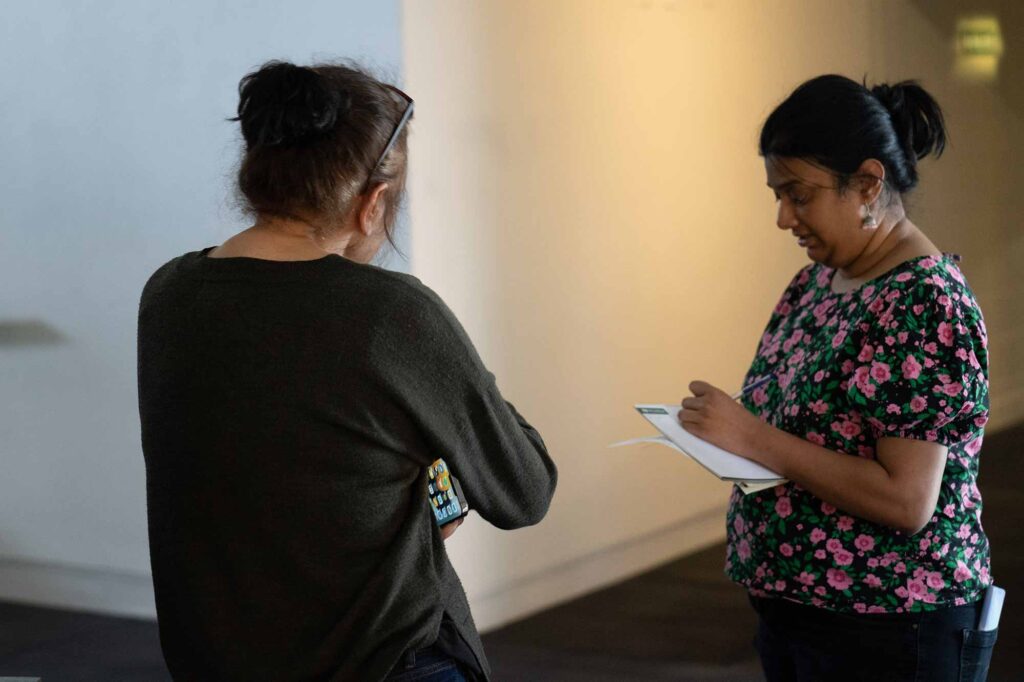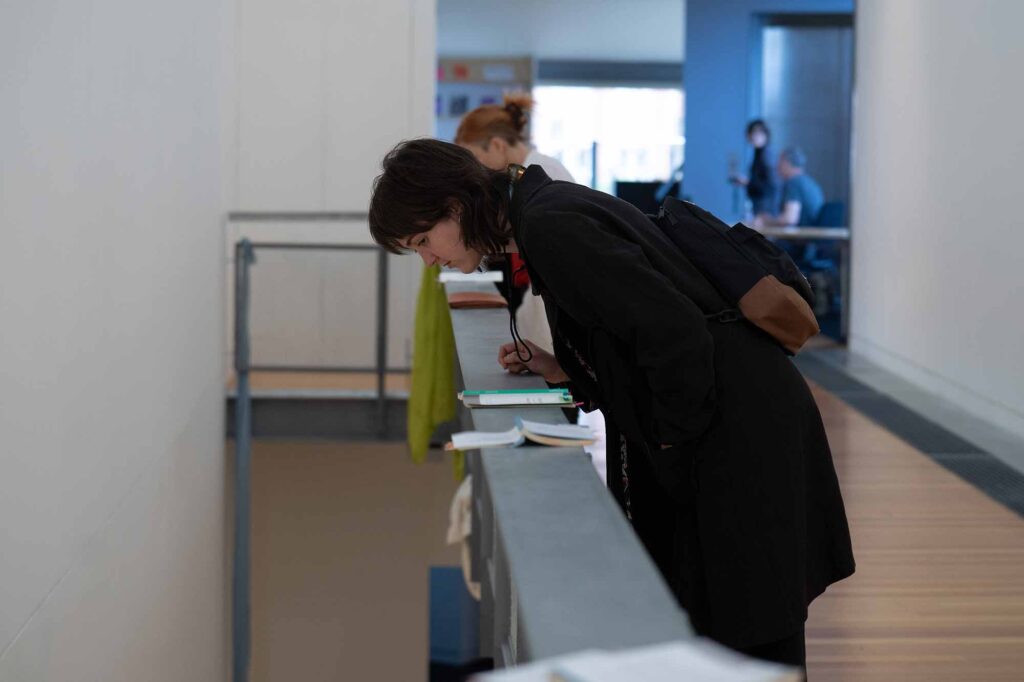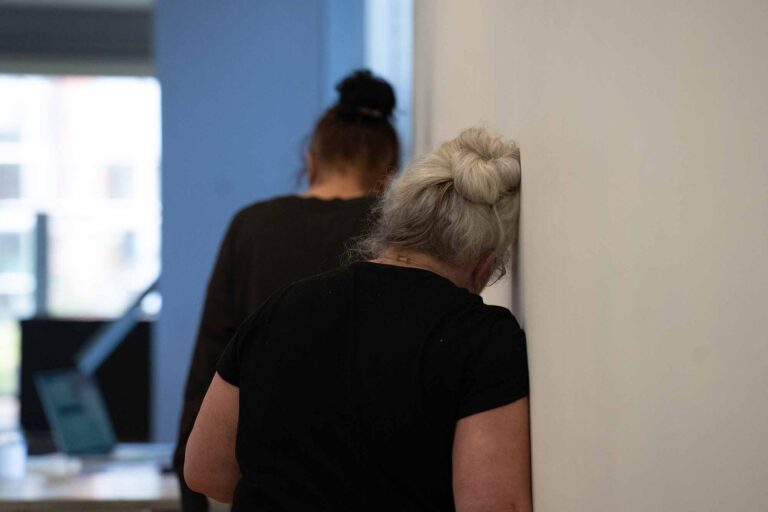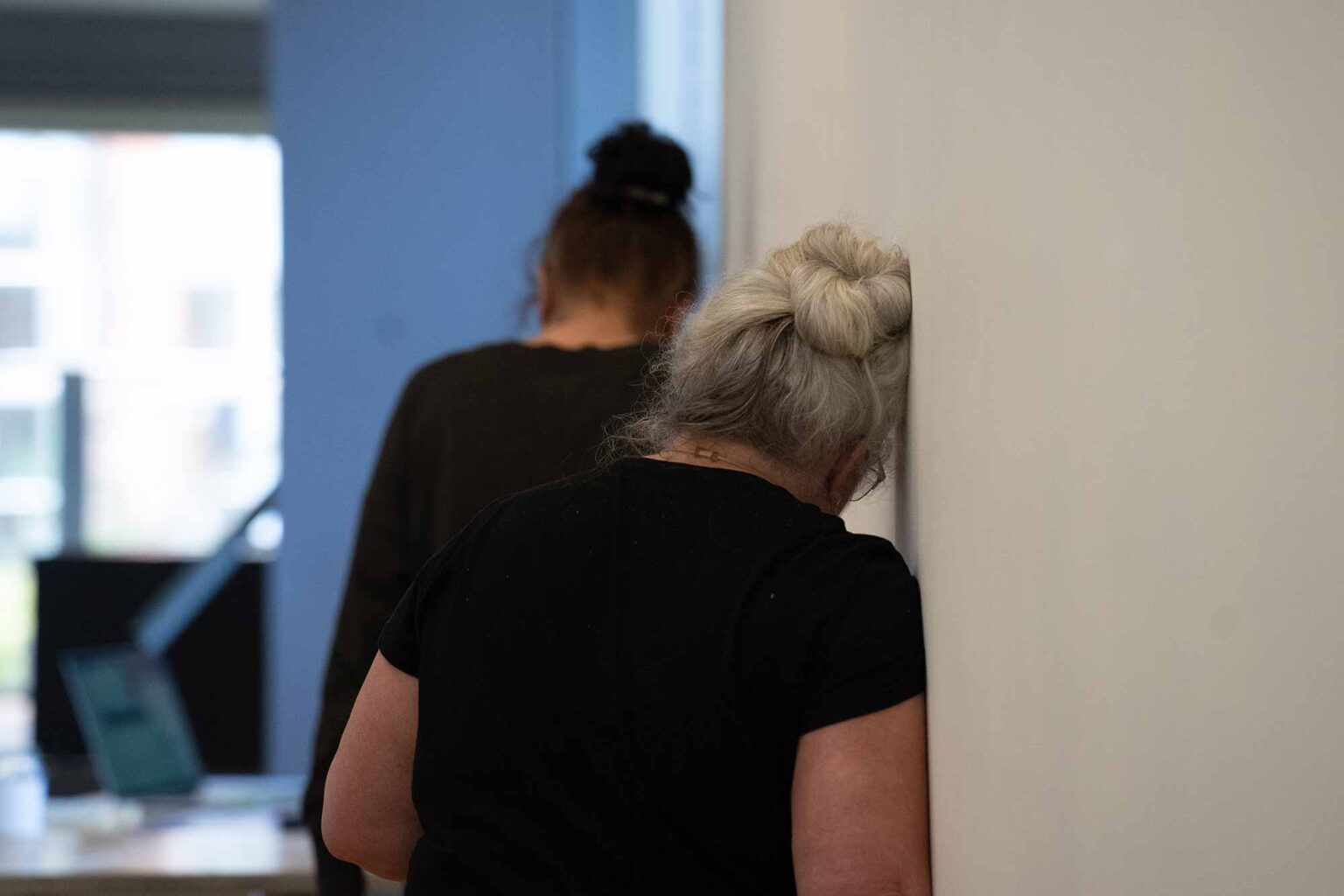Sraddha Venkataraman on Layne Waerea’s ‘The Privacy of Sound’
NERVE
Embarrassment. I had been at the University every day for four years and I hadn’t ever dropped in at the Adam Art Gallery. Quite quickly you realise this is not a place to toy with – there’s a seeming stability to the all-black interiors. The place oozes…what’s the word? Cojones. I always think buildings where you enter at the topmost floor and then work your way down have an unassuming confidence about them; it’s as though the building had set up roots a long time ago, and could show them to you. Buildings like that feel more grounded. And the gallery is stable, I reminded myself. It endured, even as the rest of the University faced brutal cuts.

My office mate, that fresh-faced Art History MA, told me a few months ago that she’d spent some time here working on a project or something. I don’t remember what the project was. I was only half-listening to her because all I could think of was how green she was. She’s applying for a PhD now, and I thought of her as I walked through those doors. A PhD in Art History, in 2023. Cojones. It’s as though she’s absorbed some of that ability to endure just by working in this building.
That’s the kind of vague connection-making that the artist, Layne Waerea, would joke about with me in a few moments. I confessed I wasn’t from the art world, and she asked, kindly, which world I was from. Literature? Waerea grinned. “That’s as vague as art”, she said, conspiratorially. Something lessened when I heard her say that, and I felt more at ease. It’s good to know vagueness is still in vogue, still legitimate sometimes. Vagueness is a by-product of discovering, of learning, of the in-between, of acts of cojones. Vagueness can be art.
The piece was vaguely a response to something an Australian artist did, Waerea told me. The Australian artist tried to annihilate gallery sound by playing his guitar. She was interested in collecting gallery sound, in curating it, in responding to the questions: what can happen in a gallery, and who makes art? Overwhelming questions, overwhelming scope. Cajones.
Waerea framing these weighty issues as a question revealed much about her. Only an academic would set out a research question in order to crystallise a complex point, and only a teacher would find it in herself to assiduously include everyone in the classroom activity. We were tasked with recording any sound we wanted to capture on our phones, and then Waerea would put it all together. Record the sound of sunlight stretching on to the floors, Waerea counselled, or the sound of sitting down on the chair; record silence, if that’s what you hear. Silence as art in a noisy world. Cajones.

Waerea’s laudable goal was to crowd source art, to make the art encounter less rigid, more participatory. Everyone can make art, she declared. Cojones. As people milled around, phones in their hand, I idly wondered if the two stentorian sneezes I had emitted since arriving at the gallery had been captured. It was strange to think of regular, real life things making it into art. In the background, an art work repeated itself over and over: “Colonisation sucks for everyone”. I think the second part was “Everyone sucks colonisation”, but I’m not sure. It was strange to think of regular, real life things making it into art.
I asked Waerea if this was a coda to her earlier work, or if it was a culmination or a reappraisal of her earlier work. Then as an afterthought I added a fourth option: a new direction in her art. Waerea picked the afterthought, admitting she’d always focused on the visual, and not the aural. Kahonez. New directions are scary, and I couldn’t imagine not returning to the same thing over and over. Waerea and I laughed at that – what a PhD student thing to say.
I came home and looked at my notes. Throughout the workshop, people had offered me notepaper. I had staunchly refused, writing on the three leaves of the PAWA programme. It was as though being in close contact with the programme transferred some of the cajones of the Adam Art Gallery, of this art work, of that MA student, of art itself, onto me.
■
Sraddha Venkataraman completed her BA(Hons.) and MA at Durham University, England, before teaching high school English literature and language in Bangalore, India. In her spare time, she enjoys baking, photography, and exploring Wellington's beaches, mountains, and cafes. She is currently a PhD Student in English Literature at Victoria University of Wellington, exploring Expressive Silence in the Poetry of Keats and Clare.



NERVE
Embarrassment. I had been at the University every day for four years and I hadn’t ever dropped in at the Adam Art Gallery. Quite quickly you realise this is not a place to toy with – there’s a seeming stability to the all-black interiors. The place oozes…what’s the word? Cojones. I always think buildings where you enter at the topmost floor and then work your way down have an unassuming confidence about them; it’s as though the building had set up roots a long time ago, and could show them to you. Buildings like that feel more grounded. And the gallery is stable, I reminded myself. It endured, even as the rest of the University faced brutal cuts.

My office mate, that fresh-faced Art History MA, told me a few months ago that she’d spent some time here working on a project or something. I don’t remember what the project was. I was only half-listening to her because all I could think of was how green she was. She’s applying for a PhD now, and I thought of her as I walked through those doors. A PhD in Art History, in 2023. Cojones. It’s as though she’s absorbed some of that ability to endure just by working in this building.
That’s the kind of vague connection-making that the artist, Layne Waerea, would joke about with me in a few moments. I confessed I wasn’t from the art world, and she asked, kindly, which world I was from. Literature? Waerea grinned. “That’s as vague as art”, she said, conspiratorially. Something lessened when I heard her say that, and I felt more at ease. It’s good to know vagueness is still in vogue, still legitimate sometimes. Vagueness is a by-product of discovering, of learning, of the in-between, of acts of cojones. Vagueness can be art.
The piece was vaguely a response to something an Australian artist did, Waerea told me. The Australian artist tried to annihilate gallery sound by playing his guitar. She was interested in collecting gallery sound, in curating it, in responding to the questions: what can happen in a gallery, and who makes art? Overwhelming questions, overwhelming scope. Cajones.
Waerea framing these weighty issues as a question revealed much about her. Only an academic would set out a research question in order to crystallise a complex point, and only a teacher would find it in herself to assiduously include everyone in the classroom activity. We were tasked with recording any sound we wanted to capture on our phones, and then Waerea would put it all together. Record the sound of sunlight stretching on to the floors, Waerea counselled, or the sound of sitting down on the chair; record silence, if that’s what you hear. Silence as art in a noisy world. Cajones.

Waerea’s laudable goal was to crowd source art, to make the art encounter less rigid, more participatory. Everyone can make art, she declared. Cojones. As people milled around, phones in their hand, I idly wondered if the two stentorian sneezes I had emitted since arriving at the gallery had been captured. It was strange to think of regular, real life things making it into art. In the background, an art work repeated itself over and over: “Colonisation sucks for everyone”. I think the second part was “Everyone sucks colonisation”, but I’m not sure. It was strange to think of regular, real life things making it into art.
I asked Waerea if this was a coda to her earlier work, or if it was a culmination or a reappraisal of her earlier work. Then as an afterthought I added a fourth option: a new direction in her art. Waerea picked the afterthought, admitting she’d always focused on the visual, and not the aural. Kahonez. New directions are scary, and I couldn’t imagine not returning to the same thing over and over. Waerea and I laughed at that – what a PhD student thing to say.
I came home and looked at my notes. Throughout the workshop, people had offered me notepaper. I had staunchly refused, writing on the three leaves of the PAWA programme. It was as though being in close contact with the programme transferred some of the cajones of the Adam Art Gallery, of this art work, of that MA student, of art itself, onto me.
■
Sraddha Venkataraman completed her BA(Hons.) and MA at Durham University, England, before teaching high school English literature and language in Bangalore, India. In her spare time, she enjoys baking, photography, and exploring Wellington's beaches, mountains, and cafes. She is currently a PhD Student in English Literature at Victoria University of Wellington, exploring Expressive Silence in the Poetry of Keats and Clare.
Sraddha Venkataraman on Layne Waerea’s ‘The Privacy of Sound’